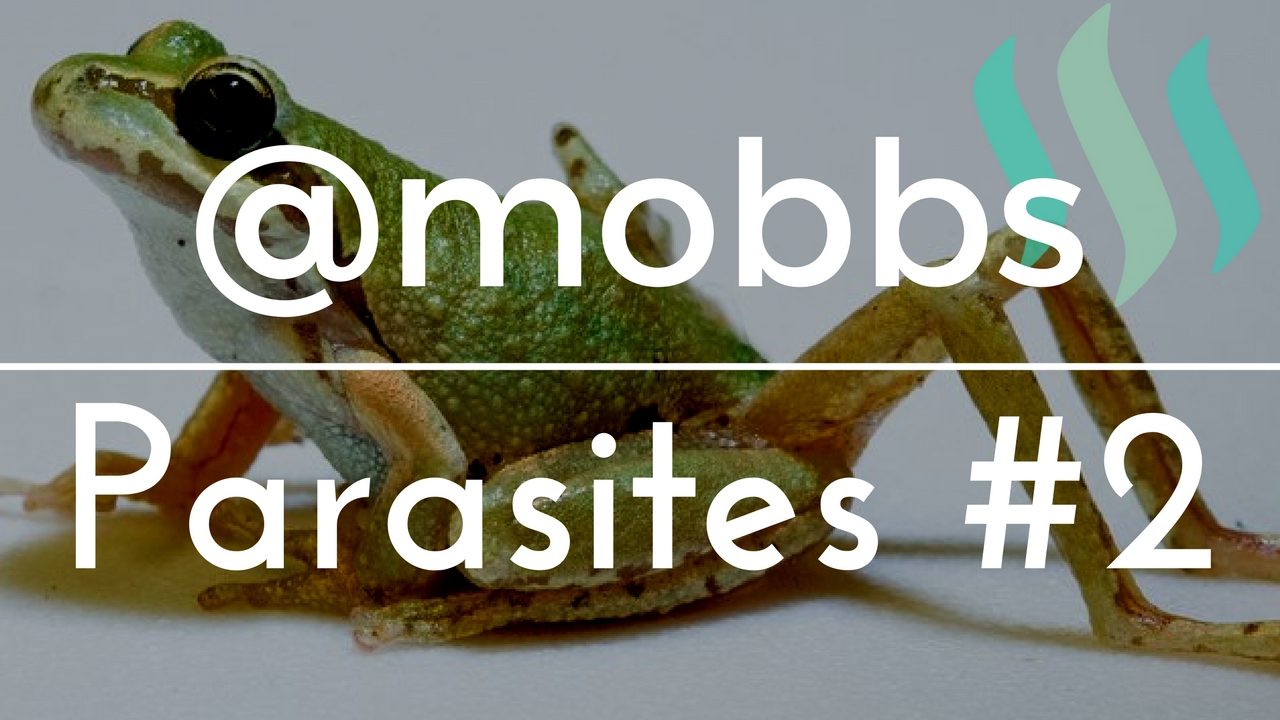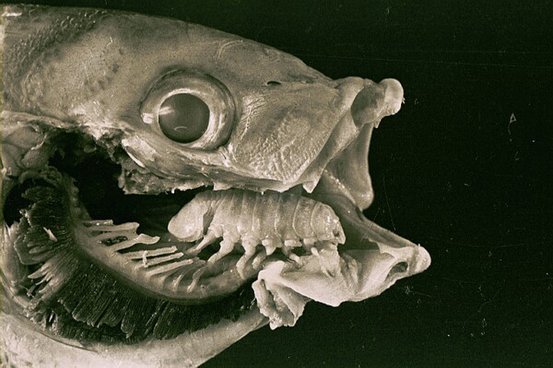PARASITIC SYMBIOSIS - Evolution from Hell, Part 2

The above photo is real. A flatworm did it. Seriously
Previously:
Convergence
Stupid Design
Weird Evolution
The Axolotl
Mutual Symbiosis
Parasitic Symbiosis Part 1
Parasites are fascinating. Horrifying? I forget which word I was going to use. Either way, the previous part wasn’t enough.
Parasites are not just insects. They’re as big as giant flowers, as small as single cells.
Fungus, fish, amoeba, worms, barnacles, mites, worms, you name it. Did I mention worms? Cool. And they’re often much more complex than we give them credit for. So that’s what this second part is about. The unsung heroes of the parasite world.

Source
Yes, this is a parasite
Horrifying parasites
Let’s warm up with some generally horrible parasites. These should give you a good idea of just how diverse and intuitive they can be, especially when they put their minds to it.
Brain-eating amoeba
The Naegleria Fowleri, as it’s officially called, doesn’t infect humans very often. But when it does, there is a whopping 98% rate of death. This amoeba goes straight to the brain and starts munching on brain cells until you don’t have much brain left. And you die.
Candiru
I guess this is a sung hero, given its infamy. The Candiru is a rather large parasitic fish. Attracted to the warmth of pee in the water, the fish will travel through the pee-stream up your urethra and then latches on inside your private parts with sharp spines. Don’t pee in the water.

Source
Green-banded broodsac

Source
Snails play a common role in parasitic adventures, but none as gross as this.
Another flatworm. This one infects the snail, grows inside one of its eyes (usually the left), and transforms the eye into a colourful caterpillar-looking thing. This attracts birds which then rip the eye off the snail, and swallows up all the larval insides.
Organ replacement parasites
Some parasites seem oddly harmless, like they just want to force their friendship on another, and if successful it will try to go about unnoticed, as long as it can stay in the host’s warm presence. Creep.
Cymotha exigua

Source
This monster goes around social media from time to time, and looks so mortifying that you instantly think of the Alien movie series, and hope it’s just as fictional. But it is real.
This tongue parasite will sneak in through the gills of the fish, suck so much blood that the fish tongue shrivels up and becomes useless, and then it grabs on to the tongue stump and replaces it, for life.
That’s about it, really. A replacement tongue. The fish can indeed use the parasite as a regular tongue.

Source
Macrocheles rettenmeyeri
This mite attaches itself to and replaces ants’ feet. The ant can use their feet as normal, and though we cannot really tell, it’s possible that the mite-foot is an actual upgrade, since their foot has another 8 feet attached to it.

Lovely
Mind-controlling parasites
Some of the most creative and ingenious parasites are those that can actually alter the state-of-mind of their hosts, like the Emerald Wasp in my previous post. This can be fatal or benign, depending on the mood of evolution at the time of creation.
Toxoplasma Gondii

Source
This tiny parasite actually lives amongst or within cells in the body of humans and other animals. Possibly 50% of us all live with this parasite (84% in France).
This parasite needs a cat host. It can only reproduce in cats. But how does it get into a cat in the first place?
Well, the parasite can live in any mammal, but it’s a safe bet going with rats. When infected, the rat’s behavior changes and becomes more reckless. Not only that, but it is actually attracted to, rather than repelled by, the scent of cat feces. And it is only the scent of cat feces that this fear infection alters.
Cats are often not far from their fecal trail, so this makes it easy for the rat to be hunted and eaten. Now the parasite is in the body it can reproduce in. Once the deed is done, the cat dumps it out and the cycle repeats.
Despite conflicting evidence of behavioural alterations in humans, there is a growing number of papers and evidence about other subtle yet dangerous effects on humans.
Pregnant women, HIV and other immune-weak people can more easily contract toxoplasmosis, a serious and often fatal blood infection. Women around the world are strongly advised to stay away from their cat’s litter boxes when pregnant, and perhaps keep the cat outside when possible.
Cordyceps
An inspiration for zombie narratives galore, this fungus is devastatingly cunning. Its tiny spores will go inside an insect, notably an ant, and start eating away at its non-vital tissue.
When ready, it’ll mess with the ant’s brain and give the ant an uncontrollable urge to climb higher. Scientists have noted the fascinating precision of the parasite, usually aiming for about 25cm off the ground, north-facing and at around 20-30 degrees C. Perfect for a fungus.
The fungus will then kill the ant and a mushroom will burst out of its brain, releasing spores to repeat the cycle.

Source
The cordyceps family does not only infect ants. There is actually a species of cordyceps present for almost all species of invertebrates in the forests of Africa and Southeast Asia, as if maintaining the balance of life.

Source
Unnecessarily complex parasites
Some parasites feel mind control isn’t cool enough. They want to really push evolution to the limit. In these cases, the parasites have some of the most complex lifecycles that we know of, using primary, secondary and tertiary hosts, altering the very mechanisms of the host’s body, and at this point you have to wonder how it even came to be in the first place.
Another flatworm, Euhaplorchis californiensis

Worms really are awful. This Californian one is like a mighty-morphing power leech. It starts off in the feces of various shorebirds. When pooped out, horn snails eat it up and contract the parasite, and they will stay there in a benign form for a few generations.
Eventually when ready, they morph into a swimmable parasite, leave their host and find a killfish. These fish have less luck than the snail. The worm enters through the gills, straight to the brain and alters its chemistry. The fish goes all crazy which makes it 30 times more likely to get caught by shorebirds and… the cycle repeats.
Lancet River Fluke

Source
This parasite is like the cordyceps on steroids.
Once again, an ant falls victim here, but not at first. The fluke lives its life in the liver of cows and other herbivores.
They release their eggs into the animal which deposits them in their feces. This is a good meal for snails. When eaten, the eggs can hatch and the larvae will start irritating the snail’s body tissue. The snail then isolates the larvae in a mucus-cyst and then coughs it up. Pretty neat.
internal mucus cyst is a great meal for ants, who are quick to munch on it before returning to the nest for the night. Only… an infected ant doesn’t return. Instead, it becomes zombified (as always), and makes its way to higher ground, on top of a grass blade perhaps, where it sits for the entire night.

Source
When morning comes, the ant climbs down and returns to its normal duties like nothing ever happened.
Every night, the ant will start moon gazing, until, its exposed self gets eaten by a herbivore, and once again, the cycle continues.
Genius.
Castrator barnacles

Source
It’s about time crabs fell victim to something.
Barnacles are typically hard-shelled sticky things you see on the side of boats. But not these ones.
This barnacle will find a weak spot in a crab’s claw and work its way in, doing away with its hard outer shell.
As any self-respecting parasite would then do, it lives off the nutrients the crab provides whilst slowly transforming the crab.
As the barnacle deposits millions of baby barnacles on the crab, it re-designs its female host into a caretaker, making it guard the barnacle babies with its life. If it’s a male crab, it simply feminizes him, going as far as growing its abdomen and shrinking its genitalia, whilst inhibiting the growth of fighting claws. The male crab will soon protect the babies just the same.

So there you have it. Lesson learned: Horrifying parasitic death is not a faraway concept only found in the jungles of brazil. Oh no no no, on the contrary, these terrors are ubiquitous, in California, France and all of your cats.
Once again, Sleep well!

Thanks, just what I wanted to read before my lunch..!
Just take a reallll close look at every bite and you'll be... probably not fine. Ah well!
Nature is full of amazing creatures and strange relationships haha
Awesome post, learnt so much!!
Never heard of the fish tongue parasite thing, imagine there is something like that for human XD
Ugh please don't make me imagine... it's traumatizing enough writing about 'em!
Thanks for reading ^__^
hahaha what in incredible piece of information I never knew about these being we are amongst. Thank you!
Happy to inform =D
Wow, awesome of nature research, @mobbs smart and brilliant
Thanks! This one indeed took a while...
Awesome post, creepy haha but informative.
I wonder how many of these tiny puppet masters are pulling on our various strings.
Thanks and... probably ALL of them